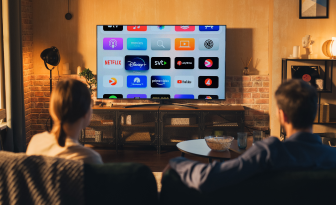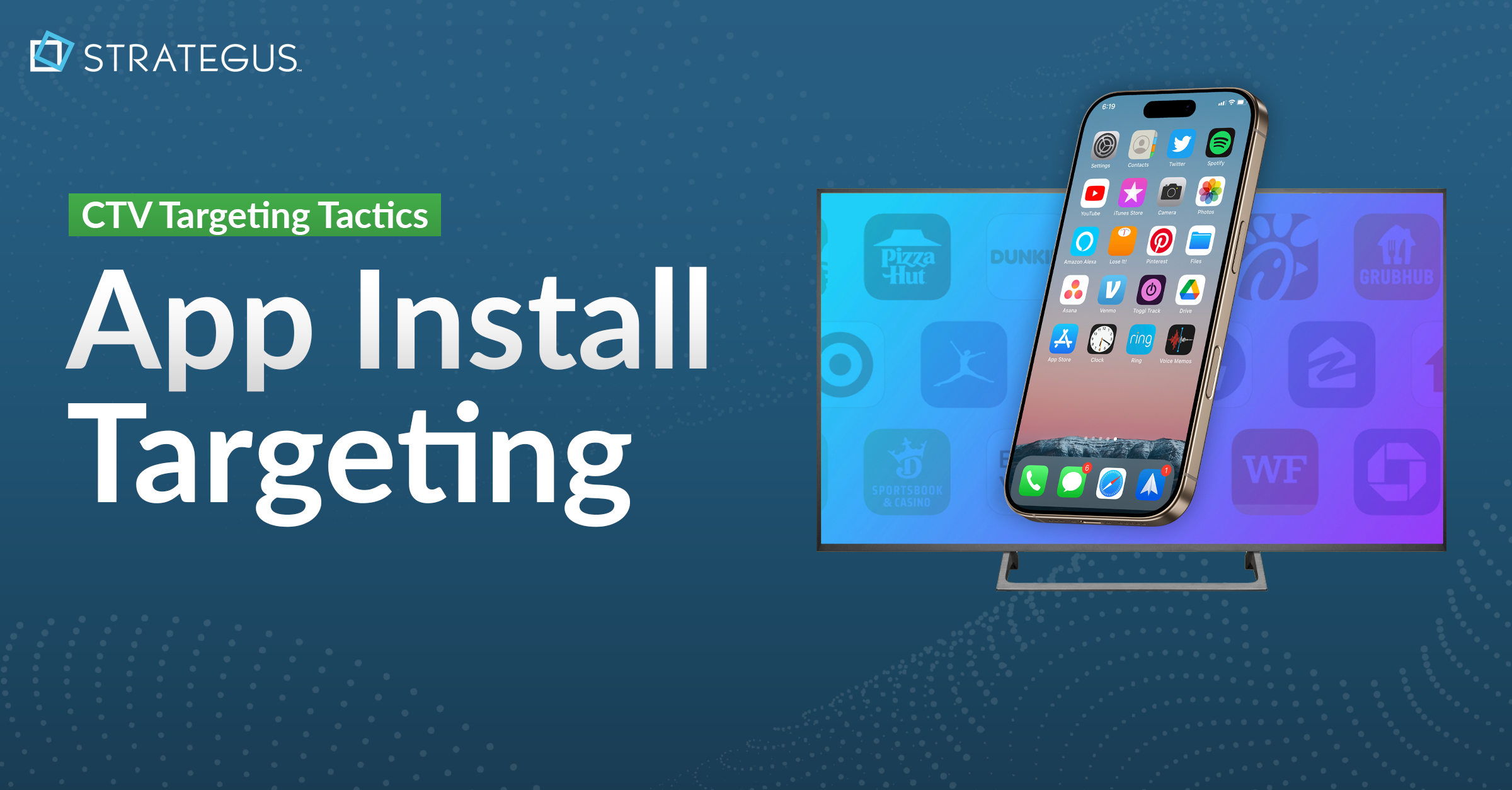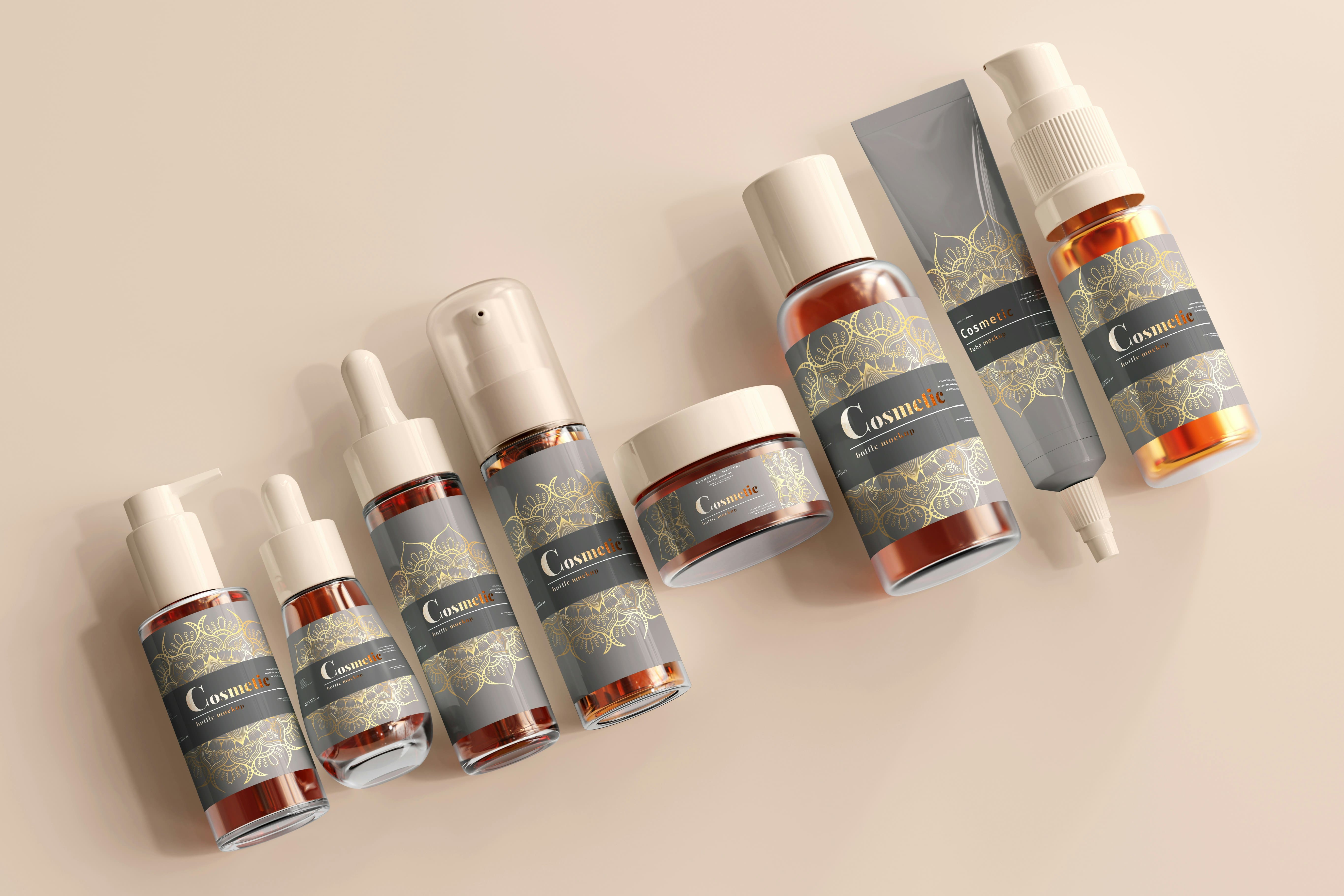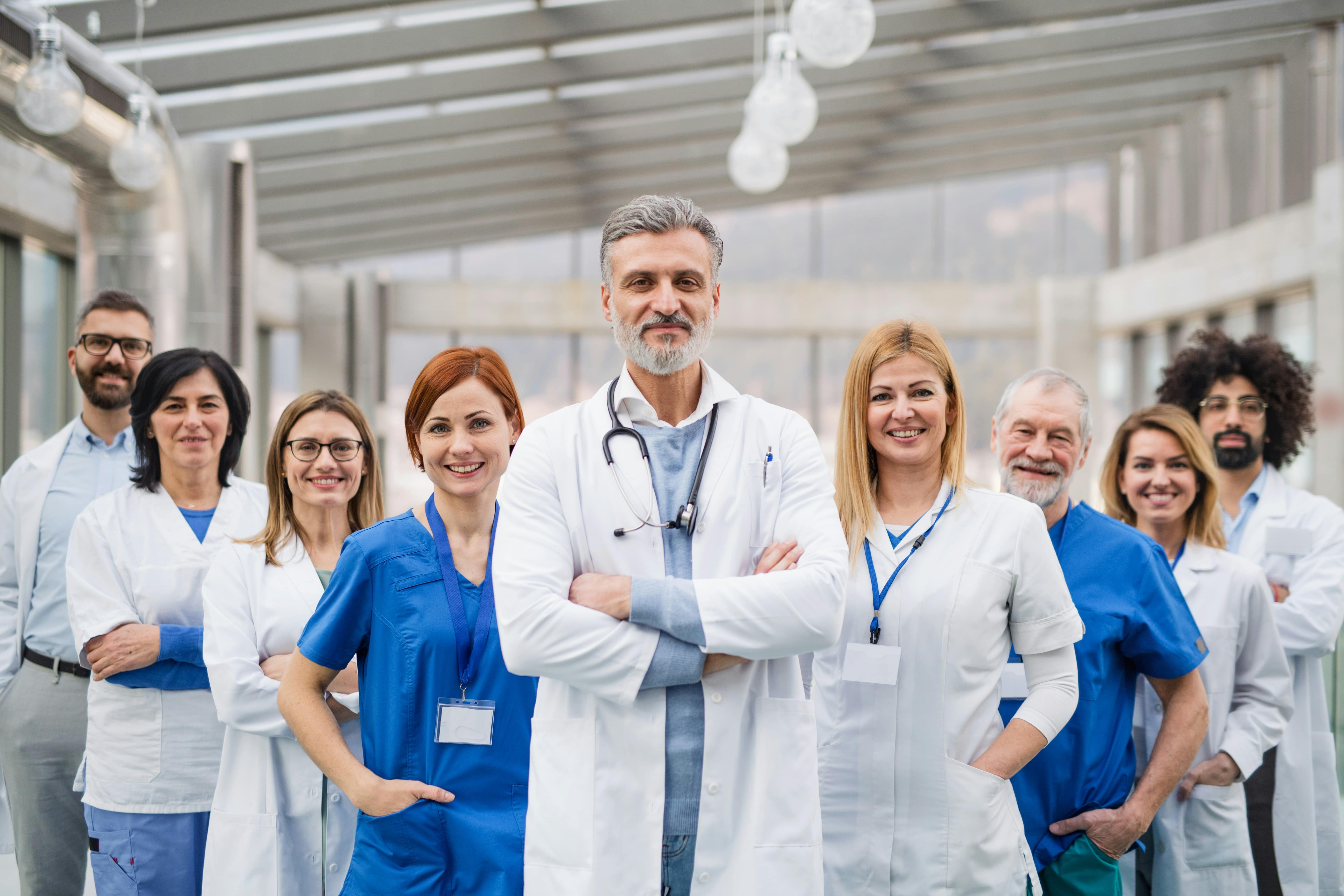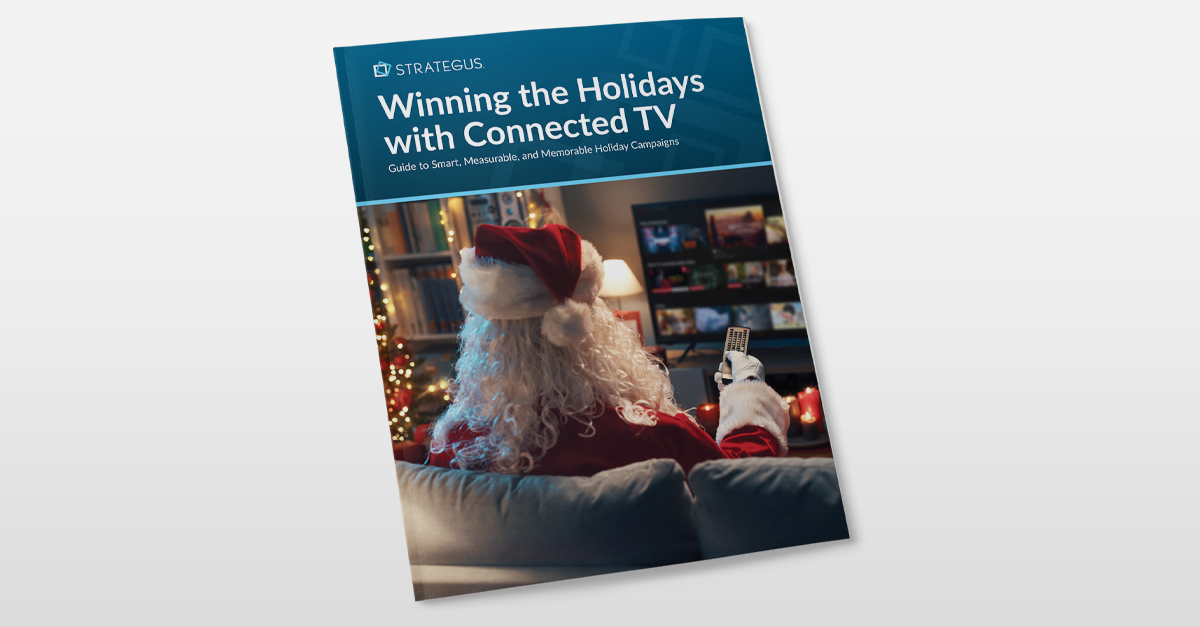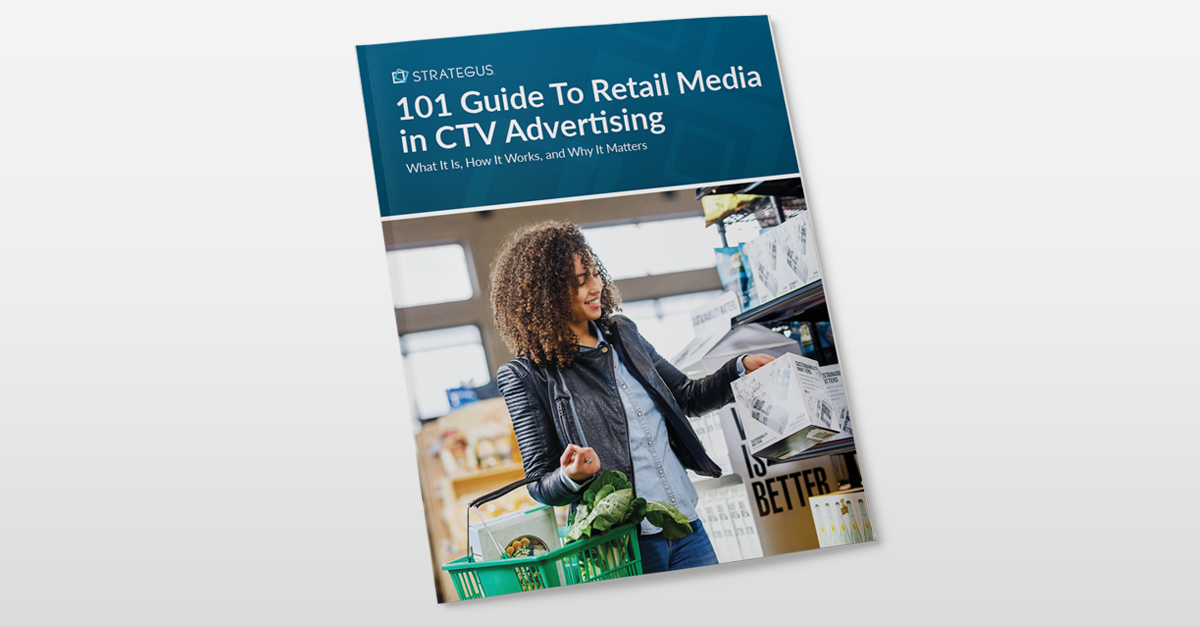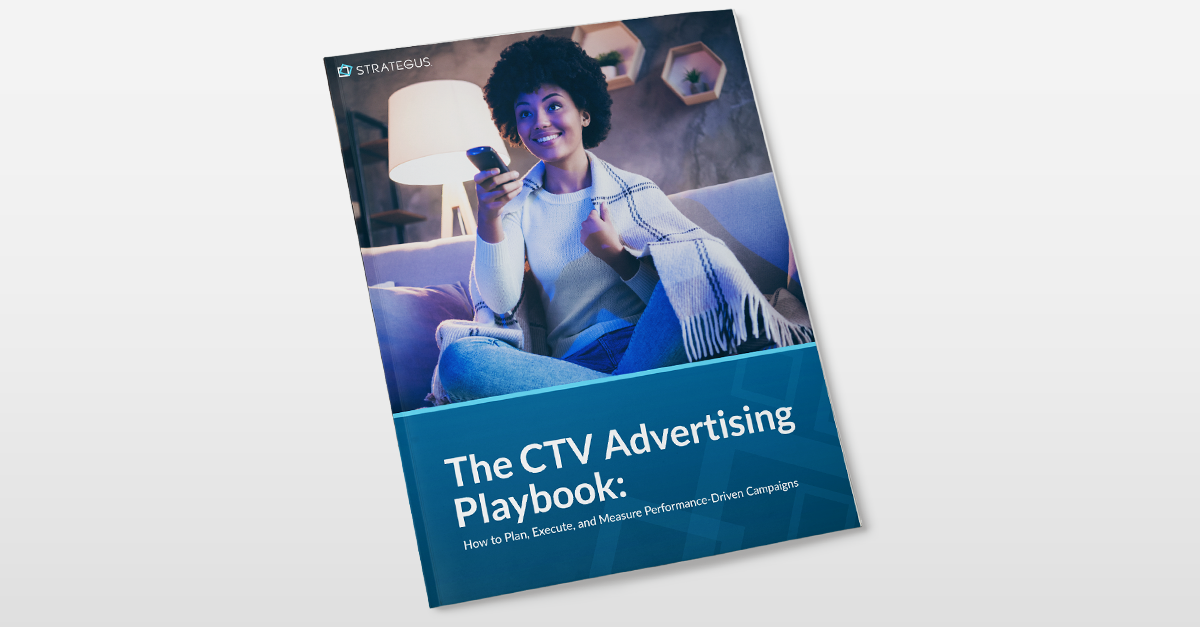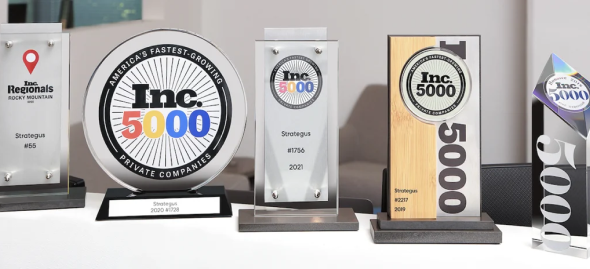- Home
- Strategus Blog
- OTT Performance Marketing & Advertising Metrics Guide
OTT Performance Marketing & Advertising Metrics Guide
 Andy Dixon
Andy Dixon
15 minutes read

Struggling to prove whether your OTT or CTV ads actually work?
Many marketers track impressions and spend, but those numbers alone don’t show if people paid attention or if sales increased.
In 2025, success comes from measuring the right metrics across screens. This guide breaks down every key number you need to track, explain, and optimize for true performance.
Key Takeaways
- Success in 2025 requires measuring delivery, quality, attention, site behavior, and outcomes, not just impressions or spend.
- Core delivery metrics include impressions, reach, frequency, CPM, and eCPM, with co-viewing adjustments for true person-level reach on CTV.
- Quality checks prioritize valid impressions, near-100% viewability on verified CTV, completion rate, audibility, on-screen time, and detection of “TV off” waste.
- Fraud and safety hinges on low IVT, verified apps and sellers, ads.cert 2.0 supply paths, and transparent SSAI to confirm real end-device delivery.
- Attention and engagement are tracked via attention rate, attentive seconds, QR scans, remote clicks, and interactive overlays, then tied to visits and conversions.
- Outcomes focus on CPA, ROAS, RPM, and incremental lift proven with clean rooms or geo tests; healthy CTV benchmarks include 90%+ VCR, IVT under 3–5%, CPM $20–40.
- Turn these metrics into ROI with verified supply, dynamic targeting, and lift measurement across screens. Speak to a Strategus expert today to design a performance-proven OTT strategy.
OTT Marketing & Advertising Core Metrics That Matter
Tracking the right metrics is a core part of running a successful CTV or OTT campaign. These metrics show if your ads reach the right people, deliver high-quality impressions, and drive real business results.
These categories cover everything from delivery basics to outcomes like sales and return on ad spend.
1. Delivery & Cost
This group of metrics tells you if your ads actually reach the right number of people, how often they see them, and how much you pay to deliver those impressions. They form the foundation of every campaign report.
a. Impressions
An impression counts each time your ad appears on a screen. In OTT and CTV, impressions are verified through ad servers and streaming platforms. Tracking impressions helps you understand total exposure, but it does not show if the viewer watched the ad fully.
b. Reach
Reach is the number of unique households or people who saw your ad at least once. For CTV, reach often measures households because several people can watch together. To get true person-level reach, you need co-viewing data that multiplies households by the average number of viewers per screen.
c. Frequency
Frequency measures how many times the average viewer saw your ad.
You calculate it as: Frequency = Total Impressions ÷ Unique Reach
A balanced frequency avoids wasted spend. Too low, and people forget the ad. Too high, and people get annoyed, which lowers effectiveness.
d. Cost Per Thousand Impressions (CPM)
CPM shows how much you spend to deliver one thousand impressions.
You calculate it as: CPM = (Total Spend ÷ Total Impressions) × 1,000
CPM helps you compare costs across different channels and publishers. For example, CTV CPMs are often higher than display ads, but the quality and completion rates also tend to be stronger.
c. Cost Per Point (CPP) or Effective CPM (eCPM)
CPP is common in TV and shows how much you pay to reach one rating point in your target audience. In digital OTT reporting, many use eCPM to show the cost of impressions that led to a desired outcome, like completed views or conversions. This helps compare efficiency between ad formats and platforms.
2. Quality & Viewability
Once you confirm your ads are delivered, the next step is to check their quality. Not all impressions are equal. Some ads play fully on screen with sound, while others run in the background or never appear to the viewer.
Quality and viewability metrics show if your ads had a real chance to make an impact.
a. Valid Impression
A valid impression means the ad truly appeared on a screen that a person could view. Verification partners filter out invalid traffic such as bots or misfired tags. Always check valid impressions before judging campaign results.
b. Viewability
Viewability shows whether your ad was actually visible on the screen for a minimum amount of time. Industry standards often use 50% of pixels in view for at least 2 seconds for digital ads.
But CTV ads normally play full screen. That means viewability is usually close to 100% when measured correctly, especially with Open Measurement SDK (OM SDK) support on devices like LG or Samsung smart TVs.
c. Completion Rate
Completion rate measures the percentage of ads that viewers watch all the way through. You can also check quartile completion (25%, 50%, 75%, 100%). CTV ads often have very high completion rates since viewers cannot easily skip them. A 90%+ completion rate is common on premium inventory.
d. Audibility
Audibility tracks whether the ad played with sound. Even if the video runs, an ad loses impact when muted. A strong campaign maintains high audibility to make sure the message lands.
e. On-Screen Percentage
This metric checks if the ad appeared in the visible area of the screen. On mobile or desktop, viewers may scroll away, lowering on-screen time. On CTV, most ads remain full screen, so on-screen percentage should stay very high.
f. “TV Off” Incidents
Sometimes CTV devices continue running streams while the television itself is off. This creates wasted impressions. Good verification tools can detect “TV off” situations and flag them. You should exclude these impressions when calculating performance.
3. Fraud & Brand Safety
Ad fraud and brand safety checks protect your budget and reputation. CTV and OTT advertising can face problems like fake impressions, hidden ads, or placements next to harmful content. Tracking these metrics helps you avoid wasted spend and keeps your brand safe.
a. Invalid Traffic (IVT)
Invalid traffic means impressions that did not come from real human viewers. There are two types:
- GIVT (General Invalid Traffic): Easy-to-spot fraud, such as known bots or data center traffic.
- SIVT (Sophisticated Invalid Traffic): Harder to detect fraud, like hijacked devices or spoofed apps.
A clean campaign has low IVT rates, usually below 3-5%. Always filter out IVT before measuring campaign success.
b. App and Publisher Authenticity
Fraudsters sometimes create fake apps or spoof known publishers. To prevent this, use industry standards like app-ads.txt and sellers.json.
These files confirm which publishers and resellers are authorized to sell inventory. Buying from verified apps and supply paths protects you from fake traffic.
c. Supply Path Integrity
Supply path integrity shows whether your ads travel through trusted and transparent platforms before reaching the viewer. Using ads.cert 2.0 ensures that every step in the ad delivery chain is authenticated, which blocks unauthorized reselling and misrepresentation.
d. SSAI Transparency
Server-Side Ad Insertion (SSAI) stitches ads into streaming content. Fraud can occur if impressions are logged even when ads never reached a real viewer. SSAI transparency metrics verify that each ad was truly delivered to an end device.
e. “TV Off” Fraud
One major CTV fraud risk happens when devices keep streaming while the television is off. This leads to fake impressions that waste spend. Monitoring “TV off” incidents helps catch and remove this wasted inventory quickly.
f. Brand Safety Checks
Beyond fraud, you also need to protect your brand image. Brand safety tools check if your ads appear next to harmful or unsuitable content, such as violence, hate speech, or fake news. Setting up strict inclusion and exclusion lists ensures your ads only run in trusted environments.
4. Attention & Engagement (2025)
After you confirm delivery, quality, and safety, the next step is to see if people actually paid attention and interacted with your ads. In 2025, attention has become a key metric, with new tools that measure how long people watch, listen, and engage.
a. Attention Rate
Attention rate shows the percentage of impressions where viewers kept their eyes on the screen for a meaningful amount of time. Unlike viewability, which only checks if the ad was on screen, attention rate measures if people were actively watching. Higher attention rates often lead to stronger recall and better outcomes.
b. Attentive Seconds
This metric goes deeper than attention rate by showing the average number of seconds people actively focused on your ad. It helps compare creatives or placements by showing which ones held attention longer.
c. QR Scan Rate
With shoppable TV ads becoming more common, QR scan rate measures how many people scanned a code on screen. This shows direct engagement and often leads to product page visits or app downloads.
d. Remote Clicks and Landing Page Visits
Some platforms let viewers click with their remote control to learn more or shop directly. Tracking clicks and follow-through to landing pages gives a clear view of active engagement beyond passive watching.
e. Pause or Overlay Interactions
Interactive ads sometimes allow viewers to pause content, play games, or engage with overlays. Tracking these actions shows deeper involvement and helps compare interactive formats against standard video ads.
Marketers care about attention because it predicts outcomes better than impressions or viewability alone. Industry groups are working to create common standards for attention measurement, but methods still vary between vendors.
The key is to use attention alongside other metrics like completion rate and conversions to get the full picture.
5. Site & App Behavior
When viewers see your ad and then visit your website or mobile app, you get proof that the campaign drove action. Site and app behavior metrics help you understand what people did after exposure, not just whether they saw the ad.
a. Visit Rate (VTR)
Visit rate shows the percentage of viewers who visited your site or app after seeing the ad.
You calculate it as: Visit Rate = (Number of Visits ÷ Total Impressions) × 100
This metric connects ad exposure to real user activity and works well for campaigns focused on driving traffic.
b. Session Depth
Session depth tracks how many pages a visitor viewed or how many screens they explored in your app. A higher depth means stronger interest and better engagement. Shallow sessions (only one page) suggest weak relevance.
c. New vs. Returning Visitors
This metric shows whether the ad attracted new audiences or brought back past visitors. Both matter: new visitors expand your reach, while returning visitors show stronger intent and higher likelihood of conversion.
d. Bounce Rate
Bounce rate measures the percentage of visitors who left your site or app after viewing only one page. A high bounce rate means the landing page did not meet their expectations. Optimizing the landing page design and speed can improve this number.
e. View-Through Visits
Many users do not click or scan right away but still visit your site later. View-through visits track these delayed responses by matching ad exposure with later visits. While this metric is usually modeled or probabilistic, it helps capture the hidden influence of CTV and OTT ads.
6. Outcomes & Incrementality
At the end of any OTT or CTV campaign, you want to know if the ads drove business results. Outcome metrics show direct impact, while incrementality proves whether those results happened because of the ads and not by chance.
a. Cost per Action (CPA)
CPA tells you how much you paid for each desired action, such as a lead form submission, app install, or sign-up.
CPA = Total Spend ÷ Number of Actions
Lower CPA means more efficiency. Always align the action with your campaign goal to get meaningful numbers.
b. Cost per Sale or Order
This metric tracks the cost of each completed purchase that came after ad exposure. It is especially useful for e-commerce or retail campaigns where sales can be tied directly to impressions.
c. Return on Ad Spend (ROAS)
ROAS measures how much revenue you earned for every dollar spent.
ROAS = Revenue Attributed to Ads ÷ Total Spend
A ROAS above 1.0 means the campaign brought in more revenue than it cost.
d. Revenue per Thousand Impressions (RPM)
RPM helps compare revenue efficiency across campaigns or platforms.
RPM = Revenue ÷ (Impressions ÷ 1,000)
This metric normalizes revenue against exposure, so you can compare high-reach and low-reach campaigns fairly.
e. Incremental Lift
Incremental lift proves whether ads caused more sales, visits, or sign-ups than would have happened without advertising. You calculate it by comparing an exposed group with a control group:
Incremental Lift = (Conversion Rate of Exposed – Conversion Rate of Control) ÷ Conversion Rate of Control
This shows the true added value of the campaign.
f. Clean Room and Geo Testing
In 2025, many advertisers use clean rooms and geo-matched tests to measure incrementality. Clean rooms allow privacy-safe matching between exposure data and conversion data. Geo testing compares markets with ads to similar markets without ads to see the difference.
OTT vs. CTV vs. Linear & How Their Metrics Differ
You’ve probably measured a linear TV campaign before and it's logical to wonder why CTV/OTT needs to be different. There are variances between the advertising features offered by these platforms and they affect how you track performance.
1. OTT (Over-the-Top)
OTT means content delivered through the internet instead of traditional cable or satellite. Viewers can watch on any internet-connected device, such as smartphones, tablets, laptops, or smart TVs.
Platforms like Netflix, Hulu, and Disney+ fall under OTT. For advertisers, OTT means access to digital targeting and tracking features that traditional TV does not offer.
2. CTV (Connected TV)
CTV is a subset of OTT, but it only refers to streaming content on a television screen. This includes smart TVs with built-in apps or TVs connected to devices like Roku, Fire Stick, Apple TV, or gaming consoles.
CTV is important because most families still prefer to watch shows and movies on a big screen. Ads here usually get higher completion rates compared to mobile or desktop because people sit back and watch longer.
3. Linear TV
Linear TV is the traditional television model. Viewers tune in at scheduled times on broadcast or cable channels. Measurement relies on panel-based ratings instead of digital tracking.
Advertisers buy time slots, but targeting options are limited compared to OTT and CTV. Linear still delivers large audiences, especially for live sports and major events.
Why These Differences Matter
- Inventory Access: OTT lets advertisers reach viewers across multiple devices, while CTV gives access to premium living-room screens. Linear gives reach through cable and broadcast networks.
- Targeting Power: OTT and CTV allow data-driven targeting at the household or device level. Linear targeting depends mainly on demographics and program choice.
- Measurement Methods: OTT and CTV use digital metrics like impressions, completion rates, and incremental reach. Linear uses ratings and gross rating points (GRPs).
- Viewer Behavior: OTT and CTV users stream on demand, so you can deliver ads when they choose content. Linear forces viewers to follow the broadcast schedule.
2025 Benchmarks & What “Good” Looks Like
We gave you the formulas to calculate some of these stats. But, what do good metrics look like? Benchmarks help you judge if your OTT and CTV campaigns are performing well compared to industry norms. These numbers are not strict rules but useful guideposts to set targets, catch problems, and push for improvements.
1. Completion Rate
On premium CTV inventory, ads often achieve 90%+ completion rates. Viewers usually cannot skip, so most ads finish playing. If your completion rate drops below 80%, check the creative length, pod position, or platform quality.
2. Viewability and Audibility
With CTV ads playing full screen, viewability should stay near 100% on verified devices. Still, always confirm using tools like Open Measurement SDK (OM SDK) when supported. Audibility should also stay high, since sound is normally on during TV viewing. A dip here may mean ads ran on muted devices.
3. Fraud Exposure
CTV fraud still exists, especially with bots, spoofed apps, and “TV off” streaming. A good campaign keeps Invalid Traffic (IVT) under 3–5%. If fraud climbs higher, review your supply paths and cut risky sources. Even small fraud levels can waste large sums at scale.
4. Shoppable Engagement
QR scan rates vary, but many campaigns see 0.1% to 0.5% of viewers scanning codes. Strong creative and clear calls to action can lift this number. Remote clicks or interactive overlays may see similar ranges depending on ease of use.
5. Cost Benchmarks
- CPM (Cost per Thousand): CTV CPMs usually range from $20 to $40 depending on audience targeting, inventory, and exclusivity.
- CPA (Cost per Action): Costs vary widely, but efficient campaigns often aim for CPA levels close to other digital channels like social or display.
- ROAS (Return on Ad Spend): A ROAS of 3:1 or higher is considered strong in direct response campaigns, while brand campaigns may accept lower ratios for reach.
6. Frequency
Healthy campaigns usually aim for 3-5 exposures per viewer per week. Less than 3 may not build awareness, while more than 10 risks oversaturation and wasted budget.
7. Ad Loads
Streaming platforms keep adjusting ad loads. Some, like Prime Video, now run 4–6 minutes of ads per hour. More ads increase available inventory but can hurt user experience. Monitor completion rates and attention closely when ad loads rise.
OTT Ads Metrics: Formulas and Calculators
Here’s how you can calculate important metrics:
|
Metric |
Formula |
Example |
|
Co-Viewing Adjusted Reach |
Persons Reached = Households Reached × Average Persons per Household |
100,000 households × 1.8 viewers = 180,000 persons |
|
Frequency |
Frequency = Total Impressions ÷ Unique Reach |
500,000 impressions ÷ 100,000 households = 5 |
|
Effective Frequency Distribution |
Break into bands: 1+ (at least once), 3+ (memory), 5+ (oversaturation) |
Shows how exposures spread across viewers instead of hiding behind averages |
|
Incremental Lift |
(Exposed Conversion Rate – Control Conversion Rate) ÷ Control Conversion Rate |
Exposed = 4%, Control = 2% → (4–2) ÷ 2 = 100% lift |
|
Cost per Action (CPA) |
CPA = Total Spend ÷ Number of Actions |
$50,000 spend ÷ 2,000 purchases = $25 CPA |
|
Return on Ad Spend (ROAS) |
ROAS = Revenue Attributed to Ads ÷ Total Spend |
$150,000 revenue ÷ $50,000 spend = 3.0 ROAS |
|
Revenue per Thousand Impressions (RPM) |
RPM = Revenue ÷ (Impressions ÷ 1,000) |
$120,000 ÷ (6,000,000 ÷ 1,000) = $120,000 ÷ 6,000 = $20 RPM |
|
Adjusted CPM (aCPM) |
aCPM = (Total Spend ÷ Qualified Impressions) × 1,000 |
Depends on what counts as “qualified impressions” (e.g., completed views, viewable ads, or conversions) |
Closing Thoughts — Turn Metrics Into Results With Strategus
Tracking OTT and CTV metrics is only the first step. The real challenge is turning insights into stronger targeting, cleaner supply, and measurable outcomes.
With Strategus, you get a fully managed CTV partner that delivers:
- Fraud Protection: Keep campaigns safe with verified supply and clean measurement.
- Smarter Targeting: Reach the right households with advanced audience data.
- Hands-Off Management: Let experts handle campaign setup, pacing, and optimization.
- Incremental Lift Measurement: Prove the real value of every dollar spent.
- Scalable Results: Grow campaigns across platforms with confidence and efficiency.
Maximize your ad spend, prove real ROI, and win in the CTV space with us. Speak to a Strategus expert to learn more today.
Frequently Asked Questions
1. Is Attention a KPI I Can Optimize To Now?
Yes. You can optimize for attention, but use it carefully. Compare results within the same vendor’s method, since standards vary. Treat attention as a leading signal and always connect it to real outcomes like visits or sales. Industry guidelines are still in draft, so use attention alongside proven metrics.
2. How Do I Avoid CTV Fraud and “TV Off” Waste?
Protect your campaigns by buying only from verified sources. Use app-ads.txt and ads.cert 2.0 to confirm supply paths. Choose inventory measured with OM SDK to track viewability. Set alerts for invalid traffic and “TV off” streaming. Cut any partners showing suspicious activity quickly to avoid wasted spend.
3. What’s the Right Frequency Cap on CTV?
Start with a simple cap of about three ads per household per day or 15 per week. Adjust based on results for attention and conversions. Watch how pod position and creative repetition affect performance. Rotate ads when frequency builds so people stay engaged without feeling overwhelmed.
4. How Do I Measure Deduped Reach Across Linear and Streaming?
Use cross-media measurement platforms like Nielsen ONE to combine linear TV data with CTV and streaming impressions. Match households and individuals to remove overlap. This way, you get a true picture of reach and can shift budgets toward channels that deliver incremental audiences rather than duplicate exposures.
5. Will Rising Prime Video Ad Loads Affect Performance?
Yes. More ad loads mean higher inventory and possibly lower CPMs, but they can also increase ad fatigue for viewers. Track completion rates and frequency closely on Prime Video as ad minutes expand. Balance delivery across multiple platforms to keep engagement strong and prevent oversaturation.
6. What Does OTT Mean in Advertising?
OTT in advertising means delivering video ads through internet-based streaming platforms instead of cable or satellite. It covers services like Hulu, Netflix with ads, or YouTube TV. Advertisers like OTT because it allows precise targeting, cross-device reach, and performance measurement, making it more flexible and data-driven compared to traditional linear TV.
7. What Does VCR Mean in Media and Advertising?
VCR stands for Video Completion Rate. It shows the percentage of viewers who watched a video ad until the end. A high VCR means the ad held attention and reached its full impact. This metric is especially important in OTT and CTV campaigns where completion rates are often higher than other channels.
8. How do Content Owners Track and Measure Ad Effectiveness on OTT?
Content owners use ad servers, SDKs, and third-party verification tools to track OTT ad performance. They measure impressions, viewability, completion rates, and attention signals. Many also use clean rooms and retailer data partnerships to connect exposures with actual purchases. This mix of delivery and outcome data helps prove ad effectiveness.
9. What Metrics Matter Most For OTT Campaign Success?
Key OTT metrics include impressions, reach, and frequency to confirm delivery, as well as completion rate and attention to show quality. Fraud checks protect spend, while outcome metrics like cost per action, incremental lift, and ROAS confirm business impact. Together, these numbers prove campaign efficiency and true performance.
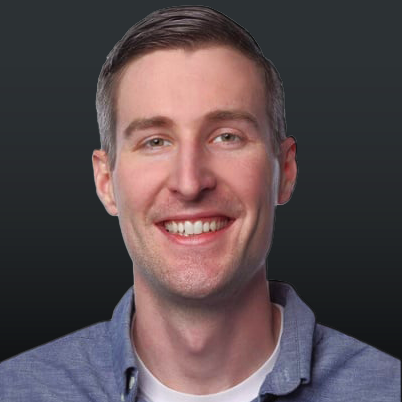
Andy Dixon is a seasoned Content Writing Specialist at Strategus, renowned for his expertise in creating engaging and impactful digital content. With over a decade of experience in content creation, Andy has honed his skills in a variety of niches, ranging from technology and marketing to education.
Strategus is a managed services connected TV(CTV) advertising agency with over 60,000+ campaigns delivered. Find out how our experts can extend your team and drive the result that matter most.
Talk to an Expert
Seeking a Custom CTV Strategy That Delivers?
What to read next
App Event Tracking: Tie Mobile App Activity to CTV Campaigns
Let’s say you’re running a CTV campaign for a personal finance app.
5 minutes read

Stop Guessing Who Your Audience Is — Let Their Apps Tell You
Connected TV (CTV) targeting often falls in one of two camps.
8 minutes read
See Who Bought After Your Ad + How Much They Spent
You can’t improve what you can’t measure. And for years, that’s been a major problem with TV advertising.
4 minutes read

First-Party Attribution: Match Ads to Sales With CRM Data
The value of first-party data continues to grow.
7 minutes read

